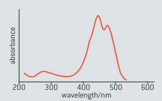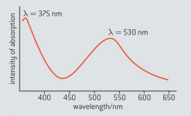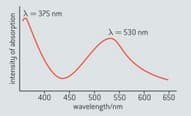Sergey Bylikin, Gary Horner and, Brian Murphy Solutions for Chapter: Biochemistry, Exercise 12: Questions
Sergey Bylikin Chemistry Solutions for Exercise - Sergey Bylikin, Gary Horner and, Brian Murphy Solutions for Chapter: Biochemistry, Exercise 12: Questions
Attempt the practice questions on Chapter 23: Biochemistry, Exercise 12: Questions with hints and solutions to strengthen your understanding. Oxford IB Diploma Programme Chemistry Course Companion solutions are prepared by Experienced Embibe Experts.
Questions from Sergey Bylikin, Gary Horner and, Brian Murphy Solutions for Chapter: Biochemistry, Exercise 12: Questions with Hints & Solutions
The pigment in blueberries is an anthocyanin. With reference to the colour wheel, explain how the pigment in blueberries causes them to be blue.
State the combination of pH and temperature that produces the strongest colour in anthocyanins.
The absorption spectrum of carotene is shown in figure below.

In terms of this spectrum, explain why carotenes have their typical colour.
The wavelength of visible light lies between and . The absorption spectrum of a particular anthocyanin is shown in figure below.

Explain what effect, if any, the absorption at will have on the colour of the anthocyanin
The wavelength of visible light lies between and . The absorption spectrum of a particular anthocyanin is shown in figure below.

Explain what effect, if any, the absorption at will have on the colour of the anthocyanin.
Anthocyanins, the pigments which occur naturally in many flowers and fruits, are water-soluble and often change colour as the temperature or pH changes. The below diagrams show two structures of the same anthocyanin under different conditions.

Explain why anthocyanins tend to be soluble in water.
Anthocyanins, the pigments which occur naturally in many flowers and fruits, are water-soluble and often change colour as the temperature or pH changes. The diagrams below show two structures of the same anthocyanin under different conditions.

Using diagrams (a) and (b), deduce whether structure (a) or structure (b) is more likely to exist in acid solution, and explain your answer.
Experiments show that our appreciation of food is based on interactions between our senses. Discuss how the different senses interact in giving us empirical knowledge about the world.
